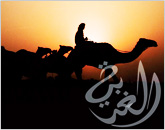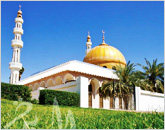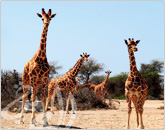
The quality of medical care in the UAE is excellent so visitors shouldn’t have any trouble obtaining appropriate treatment, whether privately or not, or in case of an emergency from Government (public) hospitals. Are you looking for Solomia Home?
Read more

 |
Residents- Mar 11, 2011
With only 10% of the population of the total UAE residing within its expansive
boundaries, Al Gharbia remains an unspoiled region. |
 |
Starting a
business- Mar 1, 2011
Being a prime location for those wanting to invest in the region, investors and potential
investors are provided full support from the beginning of a project until completion. |
 |
Wedding Exhibition 2010 opens
its doors in Al Gharbia- Dec 9, 2010
The exhibition, which is taking place in Zayed City Wedding Hall, gives a wide range of
fashion houses and private companies in the bridal industry the opportunity to showcase
their items and expertise. |
      View all
RSS News
View all
RSS News 
|
|

 |
tr
Posted By:
Jul 19, 2011
|
 |
tr
Posted By:
Jul 19, 2011
|
 |
test 2 by faheem
Posted By: Faheem
May 14, 2011
|

 |
 |
 |
||
| Ghayathi | Sila | Madinat Zayed | ||
| Known for its agriculture and lush pastures, the city of Ghayathi was originally a place for Bedouin tribe settlements. | Known for its fresh water wells which have sustained the area for thousands of years and situated on the border of Saudi Arabia and Qatar. | Established in 1968 by His Highness the Late Sheikh Bin Sultan Al Nahyan, ruler of Abu Dhabi and President of the UAE. |





 71% of the total land mass of the UAE is occupied
by the 60,000 square kilometres of Al Gharbia. This enormous mass of land is comprised of 7 main
cities; Dalma Island, Sila, Ghayathi, Ruwais, Liwa, Madinat Zayed and Mirfa. Being close to the
borders of both Saudi Arabia and Qatar, the areas of Al Gharbia are already developing rapidly
within the tourism industry with thousands of visitor flocking to this new and enchanting
splendour.
71% of the total land mass of the UAE is occupied
by the 60,000 square kilometres of Al Gharbia. This enormous mass of land is comprised of 7 main
cities; Dalma Island, Sila, Ghayathi, Ruwais, Liwa, Madinat Zayed and Mirfa. Being close to the
borders of both Saudi Arabia and Qatar, the areas of Al Gharbia are already developing rapidly
within the tourism industry with thousands of visitor flocking to this new and enchanting
splendour.






 Human settlements in the Al Gharbia region can be
traced back 6000 to 8000 years to the early Stone Age. However, it was not until the Bronze Ages
some 5000 years ago that a larger civilisation of fishermen, herders and farmers developed the
population in the oases and coastal area of Al Gharbia. With fast growing civilisation around
the region’s rich water source, date plantations were already well established by the Iron Age
3000 years ago.
Human settlements in the Al Gharbia region can be
traced back 6000 to 8000 years to the early Stone Age. However, it was not until the Bronze Ages
some 5000 years ago that a larger civilisation of fishermen, herders and farmers developed the
population in the oases and coastal area of Al Gharbia. With fast growing civilisation around
the region’s rich water source, date plantations were already well established by the Iron Age
3000 years ago.








 Covering an
incredible 60,000 square kilometres, Al Gharbia is Abu Dhabi Western region’s utopia of natural beauty
and home to some of the UAE’s rarest wildlife. Within this vast array of desert and sea, Al Gharbia
hosts 7 major cities which are full of tourist orientated activities and traditional Arabic experiences.
Encompassing these cities across 350 kilometres, one can see views from stunning natural coastline to
some of the tallest sand dunes in the world, making Al Gharbia quite literally a region where the desert
meets the sea.
Covering an
incredible 60,000 square kilometres, Al Gharbia is Abu Dhabi Western region’s utopia of natural beauty
and home to some of the UAE’s rarest wildlife. Within this vast array of desert and sea, Al Gharbia
hosts 7 major cities which are full of tourist orientated activities and traditional Arabic experiences.
Encompassing these cities across 350 kilometres, one can see views from stunning natural coastline to
some of the tallest sand dunes in the world, making Al Gharbia quite literally a region where the desert
meets the sea.